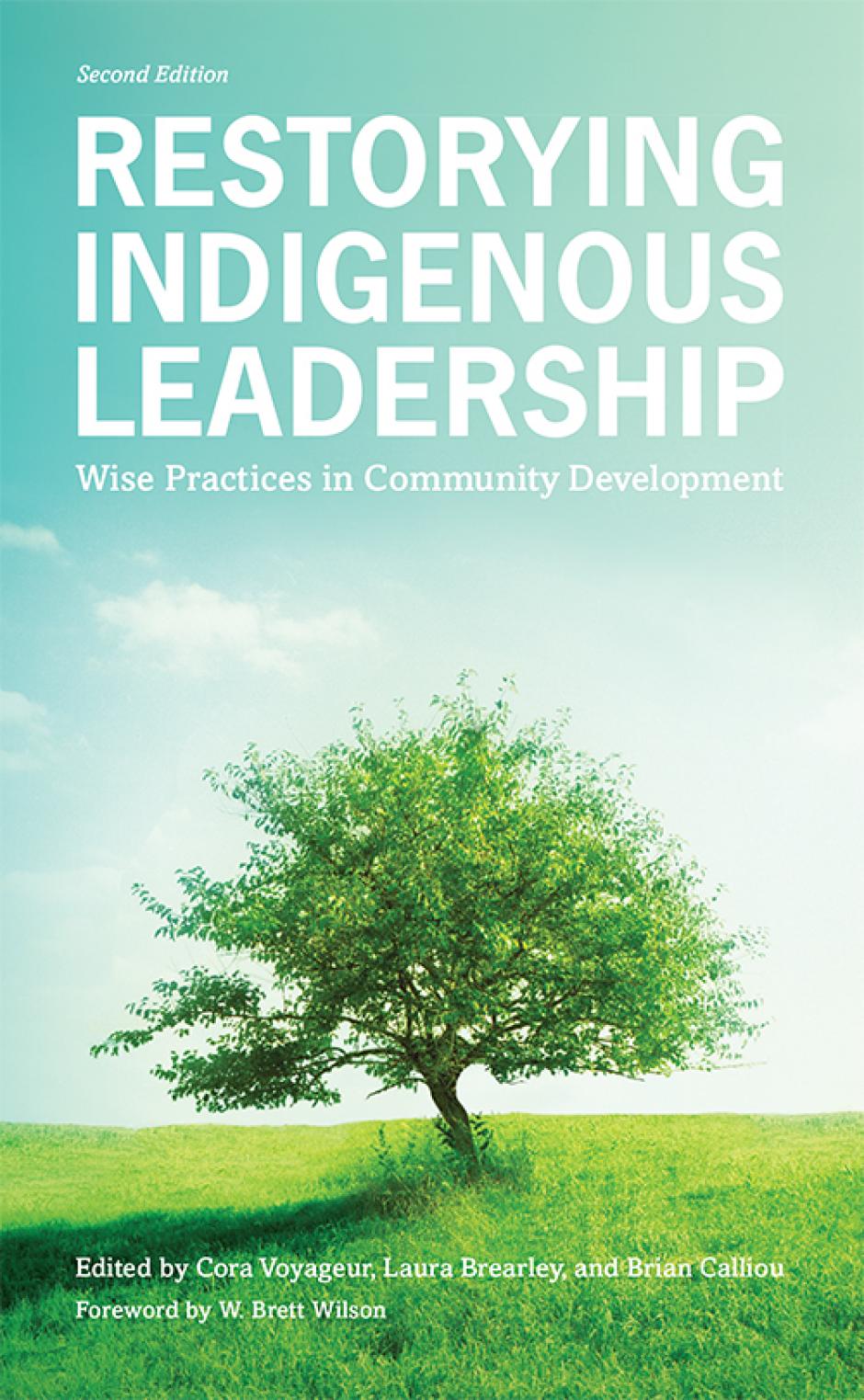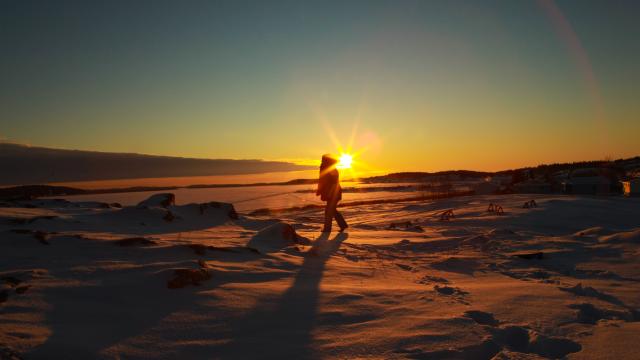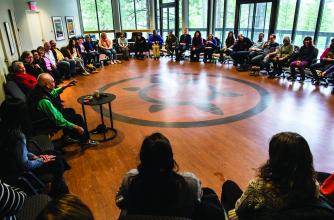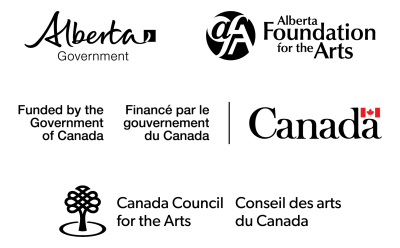Restorying Indigenous Leadership: Wise Practices in Community Development, 2nd edition
Published by Banff Centre Press, Restorying Indigenous Leadership: Wise Practices in Community Development is a foundational resource of the most recent scholarship on Indigenous leadership. The following is an excerpt from the introduction by editors Cora Voyageur, Laura Brearley, and Brian Calliou.
Since leadership plays an important role in any community, Indigenous leadership scholarship advocates opportunities for leaders within Indigenous communities to gain the knowledge and skills required to fulfill the needs and aspirations of their peoples and to foster economic development. Yet over the years, states have imposed their laws and institutions upon Indigenous peoples, resulting in the loss of traditional leadership and governance. There has been a pattern of non-Indigenous leadership practices being forced upon Indigenous communities, exacerbated by the media portraying Indigenous communities and their leaders in a negative light, which sociologists have termed a “deficit paradigm” (Ponting and Voyageur 2001). Restorying Indigenous Leadership: Wise Practices in Community Development shares different stories, which collectively could be referred to as a “strength-based” paradigm: specific examples of wise practices and successful leadership in Indigenous communities.
Stories have been bringing us together for thousands of years; storytelling is not only a way we make sense of our worlds (Ellis 2004), but it is “a creative act of leadership through which we manifest our solidarity and strengthen our people to take their next steps in encouraging good and healthy lives” (Kenny 2012, 1). Restorying Indigenous Leadership uses a storytelling model that interweaves lived experiences with extensive research to stimulate progressive and informed action through not just sharing stories but a process of restorying.
Restorying is a dynamic form of storytelling that revisits and recuperates in order to restore–a central theme in the work of Indigenous writers Thomas King (2008) and Lewis Mehl-Madrona (2007). While Indigenous scholars Audra Simpson and Dale Turner argue that Indigenous leaders need to understand and use the narratives of modernity and globalization, they also emphasize the necessity of incorporating Indigenous knowledge, practices, and ideas into the global discourse in order to assert their respective community rights and interests (Simpson and Turner 2008). Thus, restorying not only helps readers become aware of “the power and beauty of our stories to educate and heal people” (Archibald 2008, 371), but enacts a kind of storytelling that encompasses the past, the present, and the future, and is a participatory and reciprocal process between writer and reader.
Indigenous researcher Judy Atkinson advocates the form of listening that brings a sense of responsibility to the stories that are told, called Deep Listening, and stresses the importance of respect and relationality in the relationship between the storyteller and the listener. At its most profound level, Deep Listening is the search for understanding and meaning (Atkinson 2001, 8) by paying attention to the spaces within and between stories. Being awake and attuned in this way develops a critical awareness of our relationship to the stories being told and those being silenced. John Berger contends that we need to listen to what is said, what is not said, what is waiting to be said, and what is crying out to be expressed (Berger 2008). This kind of awareness requires an understanding that there is not just one kind of listening–that listening is a complicated, nuanced process that requires practice.
In his work on learning by contemplating the future, Otto Scharmer describes four types of listening:
1. Downloading: confirming what you already know
2. Objective or Attentive Listening: paying attention to what differs from your own concepts
3. Empathic Listening: seeing the world through someone else’s eyes
4. Generative Listening: listening from the emerging field of the future (2009, 7–8)
Scharmer’s fourth concept, Generative Listening, aligns closely with the concept of Deep Listening. It incorporates a confirmation of what is known, an attention to what is different, and a listening beyond what is heard with the ears. It invites work teams or communities to be fully present to each other and to identify what is happening and emerging in the moment. For leaders, it means getting out of the way in order to open a space in which genuine contact can be made. That space is a place of possibility where current and emerging needs can be expressed and explored.
Listening deeply opens the way to developing collective mindfulness. Being collectively mindful is about being aware of the complexities within a situation and the different perspectives from which it can be viewed. When leaders are present, they are attuned to other people and to their context. Scharmer refers to this as “presencing”–a term that blends presence and sensing (Scharmer 2009). The paradox is that the more a leader is present, the more she or he is able to get out of the way and become more available for other people. Scharmer contends that a kind of deepened presence gives access to greater levels of authentic awareness, new dimensions of power, and a clearer direction. It bridges inner experience and collective experience in creative, non-linear ways.
One of the key elements of Karl Weick’s (2006) work on collective mindfulness is the capacity to seek a complete and nuanced picture of any difficult situation. Reflecting on issues from different perspectives requires a degree of comfort with complexity and a reluctance to simplify. It helps leaders pull out threads and insights from knotty issues, working in cooperation with our commonalities and differences. Collective mindfulness is an important element of how Indigenous peoples come together to present their diverse perspectives in a dialogue until a consensus emerges. It is the key to the work that needs to be done to co-create communities where we can work together in sustainable ways.
The stories in Restorying Indigenous Leadership share with readers and scholars the inspiring processes, and wise practices, by which we may concurrently develop retrospective awareness, recognize current capacities, and become aware of future possibilities for Indigenous leadership–deeply awake to our present moment as well as our responsibility to the future. Restorying is not just about the stories told, but about the significant questions that surface in the spaces that exist between stories: What matters? What matters most?
To purchase Restorying Indigenous Leadership: Wise Practices in Community Development, please visit banffcentre.ca/press.
References:
• Atkinson, Judy. 2001. “Privileging Indigenous Research Methodologies.” National Indigenous Researchers Forum. Melbourne: University of Melbourne.
• Berger, John. January 14, 2008. “In Conversation with Ramona Kaval.” The Book Show. Radio National, Australia.
• Ellis, Carolyn. 2004. The Ethnographic I: A Methodological Novel about Autoethnography. Walnut Creek: Alta Mira Press.
• Kenny, Carolyn. 2012. “Liberating Leadership Theory.” In Living Indigenous Leadership: Native Narratives on Building Strong Communities, edited by Carolyn Kenny and Tina Ngaroimata Fraser, 1–16. Vancouver: University of British Columbia Press.
• King, Thomas. 2008. “The art of indigenous knowledge: A million porcupines crying in the dark.” In Handbook of the Arts in Qualitative Research: Perspectives, Methodologies, Examples, and Issues, edited by Ardra L. Cole and J. Gary Knowles, 13–27. Thousand Oaks: Sage Publications.
• Mehl-Madrona, Lewis. 2007. Narrative Medicine: The Use of History and Story in the Healing Process. Vermont: Bear & Company.
• Ponting, J. Rick, and Cora J. Voyageur. 2001. “Challenging the Deficit Paradigm: Grounds for Optimism Among First Nations in Canada.” Canadian Journal of Native Studies 21 (2): 275–307.
• Scharmer, C. Otto. 2007. Theory U: Leading from the Future as it Emerges. San Francisco: Berrett-Koehler.
• Simpson, Audra, and Dale Turner. 2008. “Indigenous Leadership in a Flat World.” Research paper, National Centre for First Nations Governance, Vancouver, British Columbia.
• Weick, Karl E. 2006. “Faith, Evidence and Action: Better Guesses in an Unknowable World.” Organization Studies 27: 1723–36.

Book cover of Restorying Indigenous Leadership







